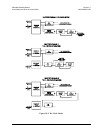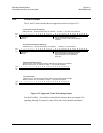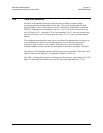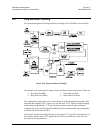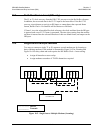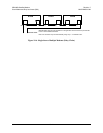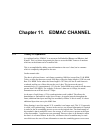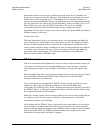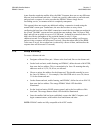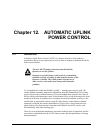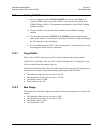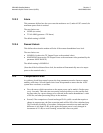
11–1
Chapter 11. EDMAC CHANNEL
11.1 Theory Of Operation
As explained earlier, EDMAC is an acronym for Embedded Distant-end Monitor And
Control. This is a feature that permits the user to access the M&C features of modems
which are at the distant-end of a satellite link.
This is accomplished by adding extra information to the user’s data, but in a manner
which is completely transparent to the user.
On the transmit side:
The data is split into frames - each frame containing 1008 bits (except Rate 21/44 BPSK
Turbo, or when the data rates exceed 2048 kbps, where the frame length is 2928 bits, and
Rate 5/16 BPSK Turbo where the frame length is 3072 bits). 48 bits in each frame are
overhead, and the rest of these bits are the user’s data. This increases the rate of
transmission by 5% (approximately 1.5% for the Turbo BPSK cases, and for all data rates
greater than 2.048 Mbps). For example, if the user’s data rate is 64 kbps, the actual
transmission rate will now be at 67.2 kbps.
At the start of each frame, a 12-bit synchronization word is added. This allows the
demodulator to find and lock to the start of frame. At regular intervals throughout the
frame, additional data bytes and flag bits are added (a further 36 bits in total). It is these
additional bytes that convey the M&C data.
When framing is used, the normal V.35 scrambler is no longer used. This V.35 approach
is called ‘self synchronizing’, because in the receiver, no external information is required
in order for the de-scrambling process to recover the original data. The disadvantage of
this method is that it multiplies errors. On average, if one bit error is present at the input
of the descrambler, 3 output errors are generated. However, there is an alternative when
the data is in a framed format. In this case, a different class of scrambler may be used -
one which uses the start of frame information to start the scrambling process at an exact



